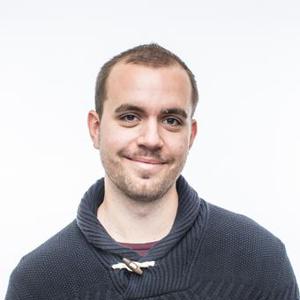Photo credit Karl ÖfverströmThe dream of superfast and powerful quantum computers has again been brought into focus, and large resources have been invested in research in Sweden, Europe and the world. A Swedish quantum computer is to be built within ten years, and the EU has designated quantum technology one of its flagship projects. At the moment, few useful algorithms are available for quantum computers, but it is expected that the technology will be hugely significant in simulations of biological, chemical and physical systems that are far too complicated for even the most powerful computers currently available. A bit in a computer can take only the value one or zero, but a quantum bit can take all values in between.
Two degrees of freedom
Professor Jan-Åke Larsson and his doctoral student Niklas Johansson, in the Division for Information Coding at the Department of Electrical Engineering, Linköping University, have come to grips with what happens in a quantum computer and why it is more powerful than a classical computer. Their results have been published in the scientific journal Entropy.
“We have shown that the major difference is that quantum computers have two degrees of freedom for each bit. By simulating an additional degree of freedom in a classical computer, we can run some of the algorithms at the same speed as they would achieve in a quantum computer”, says Jan-Åke Larsson.
They have constructed a simulation tool, Quantum Simulation Logic, QSL, that enables them to simulate the operation of a quantum computer in a classical computer. The simulation tool contains one, and only one, property that a quantum computer has that a classical computer does not: one extra degree of freedom for each bit that is part of the calculation.
“Thus, each bit has two degrees of freedom: it can be compared with a mechanical system in which each part has two degrees of freedom – position and speed. In this case, we deal with computation bits – which carry information about the result of the function, and phase bits – which carry information about the structure of the function”, Jan-Åke Larsson explains.
Quantum algorithms
They have used the simulation tool to study some of the quantum algorithms that manage the structure of the function. Several of the algorithms run as fast in the simulation as they would in a quantum computer.
“The result shows that the higher speed in quantum computers comes from their ability to store, process and retrieve information in one additional information-carrying degree of freedom. This enables us to better understand how quantum computers work. Also, this knowledge should make it easier to build quantum computers, since we know which property is most important for the quantum computer to work as expected”, says Jan-Åke Larsson.
Jan-Åke Larsson Photo credit Thor Balkhed
Jan-Åke Larsson and his co-workers have also supplemented their theoretical simulations with a physical version built with electronic components. The gates are similar to those used in quantum computers, and the toolkit simulates how a quantum computer works. With its help students, for example, can simulate and understand how quantum cryptography and quantum teleportation works, and also some of the most common quantum computing algorithms, such as Shor’s algorithm for factorisation. (The algorithm works in the current version of the simulation but is equally fast – or slow – as in classical computers).
The LiU scientists founded a company in 2017. This has recently been included in a list drawn up by the of web journal EU-startups of the ten most interesting start-ups in Europe that “cool down the crazy world of quantum computing”.
(The heading “10 European startups cooling down the crazy world of quantum computing” is a play on words, and refers to the fact that quantum computers normally require extensive cooling.)
Quantum Simulation Logic, Oracles, and the Quantum Advantage
Niklas Johansson and Jan-Åke Larsson
Department of Electrical Engineering, Linköping University, SE-581 83 Linköping, Sweden, Entropy 2019, DOI 10.3390/e21080800

